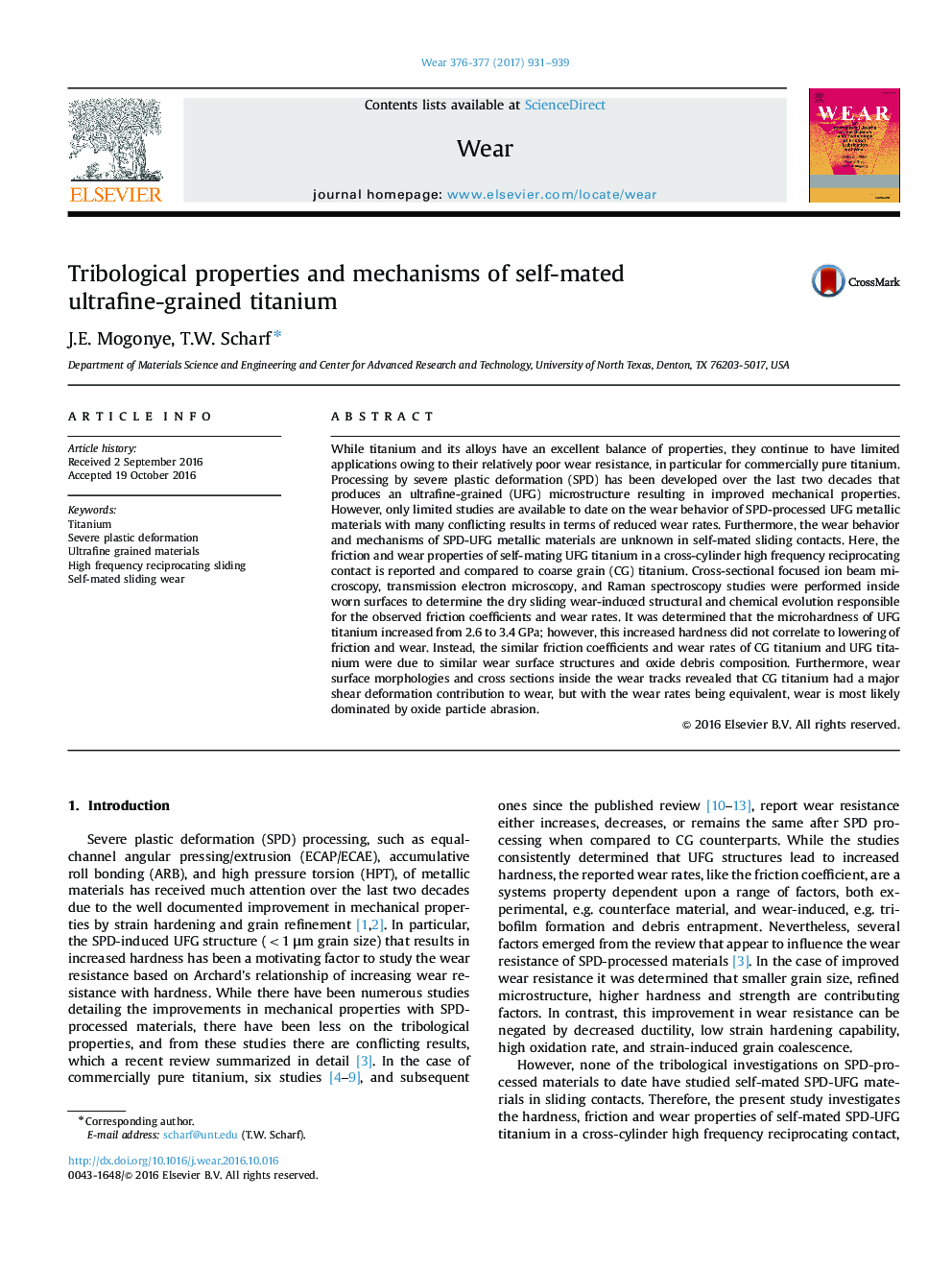| کد مقاله | کد نشریه | سال انتشار | مقاله انگلیسی | نسخه تمام متن |
|---|---|---|---|---|
| 4986535 | 1454952 | 2017 | 9 صفحه PDF | دانلود رایگان |
عنوان انگلیسی مقاله ISI
Tribological properties and mechanisms of self-mated ultrafine-grained titanium
ترجمه فارسی عنوان
خصوصیات تریبولوژیکی و مکانیسم های تیتانیوم فوق العاده دانه بندی شده
دانلود مقاله + سفارش ترجمه
دانلود مقاله ISI انگلیسی
رایگان برای ایرانیان
کلمات کلیدی
تیتانیوم، تغییر شکل پلاستیک شدید مواد فوق سنگین، فرکانس بالا سوئیچینگ کشویی، سایش کشویی خودپرداز،
موضوعات مرتبط
مهندسی و علوم پایه
مهندسی شیمی
شیمی کلوئیدی و سطحی
چکیده انگلیسی
While titanium and its alloys have an excellent balance of properties, they continue to have limited applications owing to their relatively poor wear resistance, in particular for commercially pure titanium. Processing by severe plastic deformation (SPD) has been developed over the last two decades that produces an ultrafine-grained (UFG) microstructure resulting in improved mechanical properties. However, only limited studies are available to date on the wear behavior of SPD-processed UFG metallic materials with many conflicting results in terms of reduced wear rates. Furthermore, the wear behavior and mechanisms of SPD-UFG metallic materials are unknown in self-mated sliding contacts. Here, the friction and wear properties of self-mating UFG titanium in a cross-cylinder high frequency reciprocating contact is reported and compared to coarse grain (CG) titanium. Cross-sectional focused ion beam microscopy, transmission electron microscopy, and Raman spectroscopy studies were performed inside worn surfaces to determine the dry sliding wear-induced structural and chemical evolution responsible for the observed friction coefficients and wear rates. It was determined that the microhardness of UFG titanium increased from 2.6 to 3.4Â GPa; however, this increased hardness did not correlate to lowering of friction and wear. Instead, the similar friction coefficients and wear rates of CG titanium and UFG titanium were due to similar wear surface structures and oxide debris composition. Furthermore, wear surface morphologies and cross sections inside the wear tracks revealed that CG titanium had a major shear deformation contribution to wear, but with the wear rates being equivalent, wear is most likely dominated by oxide particle abrasion.
ناشر
Database: Elsevier - ScienceDirect (ساینس دایرکت)
Journal: Wear - Volumes 376â377, Part B, 15 April 2017, Pages 931-939
Journal: Wear - Volumes 376â377, Part B, 15 April 2017, Pages 931-939
نویسندگان
J.E. Mogonye, T.W. Scharf,
